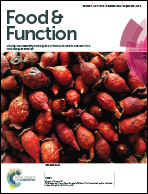Immunoregulatory effects on Caco-2 cells and mice of exopolysaccharides isolated from Lactobacillus acidophilus NCFM
Abstract
On the basis of our previous results on potential immunoregulation of Lactobacillus acidophilus NCFM, the immunoregulatory effects of exopolysaccharides (EPS) isolated from L. acidophilus NCFM and their regulating mechanisms are further investigated in the current research. Stimulated by EPS preparations, four immune-related genes in the human colorectal adenocarcinoma cell line Caco-2 cells, namely, interleukin-1α (IL-1α), chemokine C-C motif 2 (CCL2), tumor necrosis factor α (TNF-α), and pentraxin 3 (PTX3), first showed an increase at 2–4 h, peaked at 4 h, and then decreased at 4–12 h. Similar trends were observed in vivo: four genes showed transient expression (highest on the 4th day) in the cecum and colon of mice. Meanwhile, the organ coefficient, clearance index and phagocytic index all significantly increased with time extension and dose increase of EPS stimulation. EPS triggered NF-κB and p38 mitogen-activated protein kinase (p38 MAPK) signaling pathways in Caco-2 cells, and the activated pathways initiated the genes expression. EPS compounds from L. acidophilus NCFM may play an important role in host immunoregulation and might be applied as a new type of immunoregulatory agent in functional foods.


 Please wait while we load your content...
Please wait while we load your content...